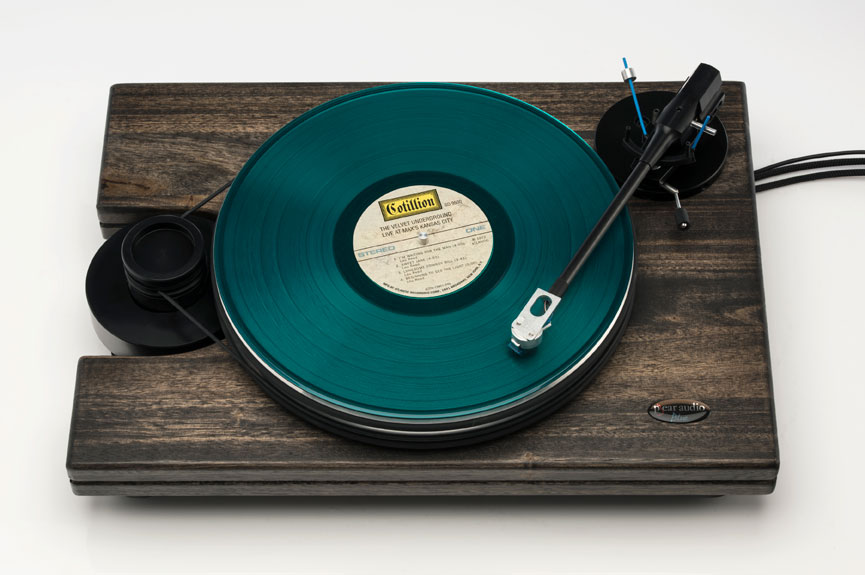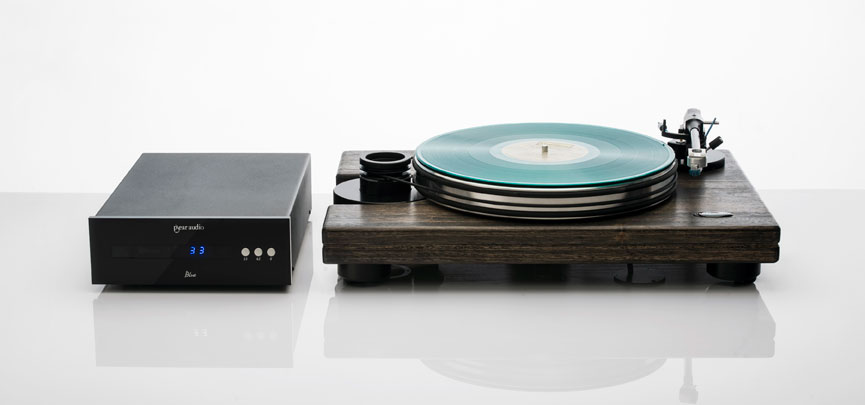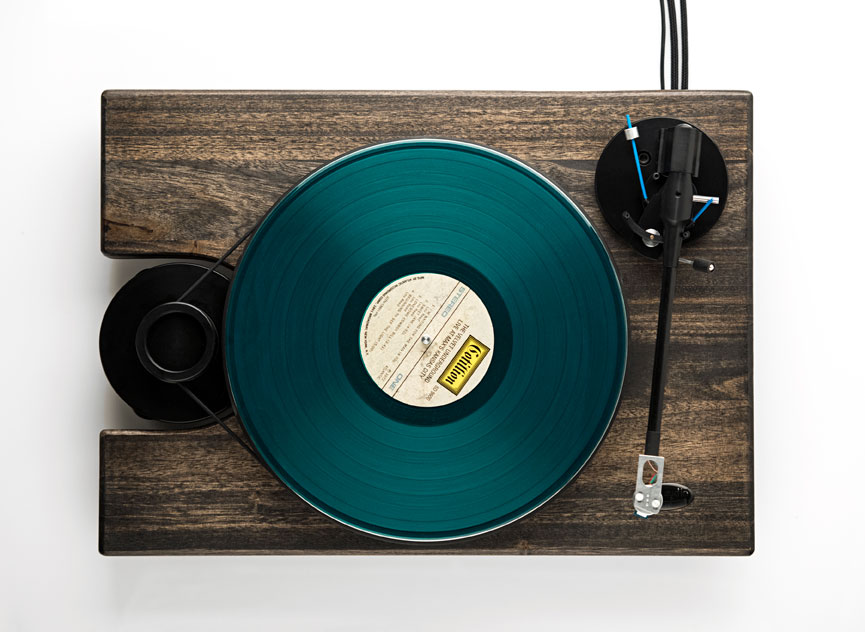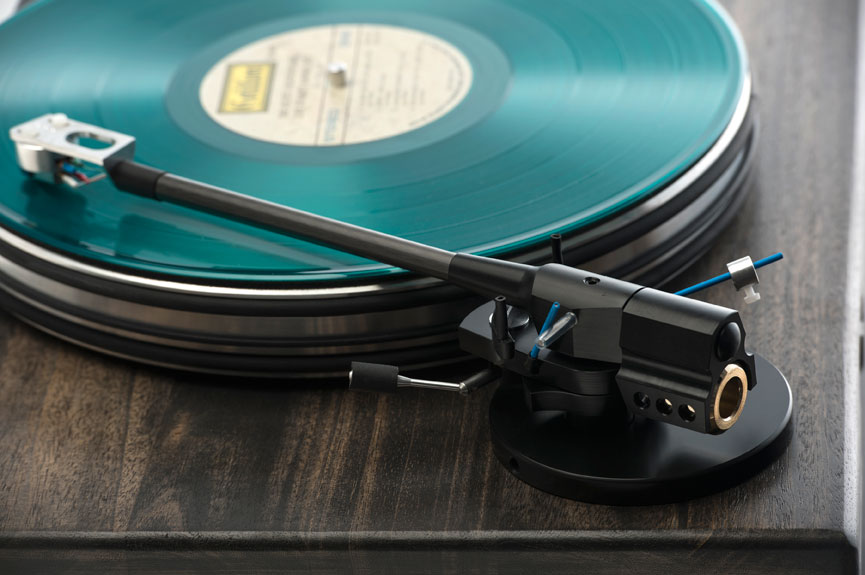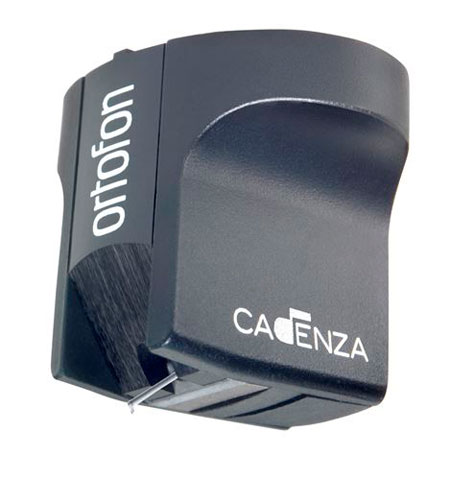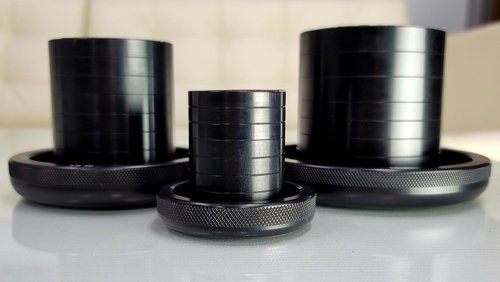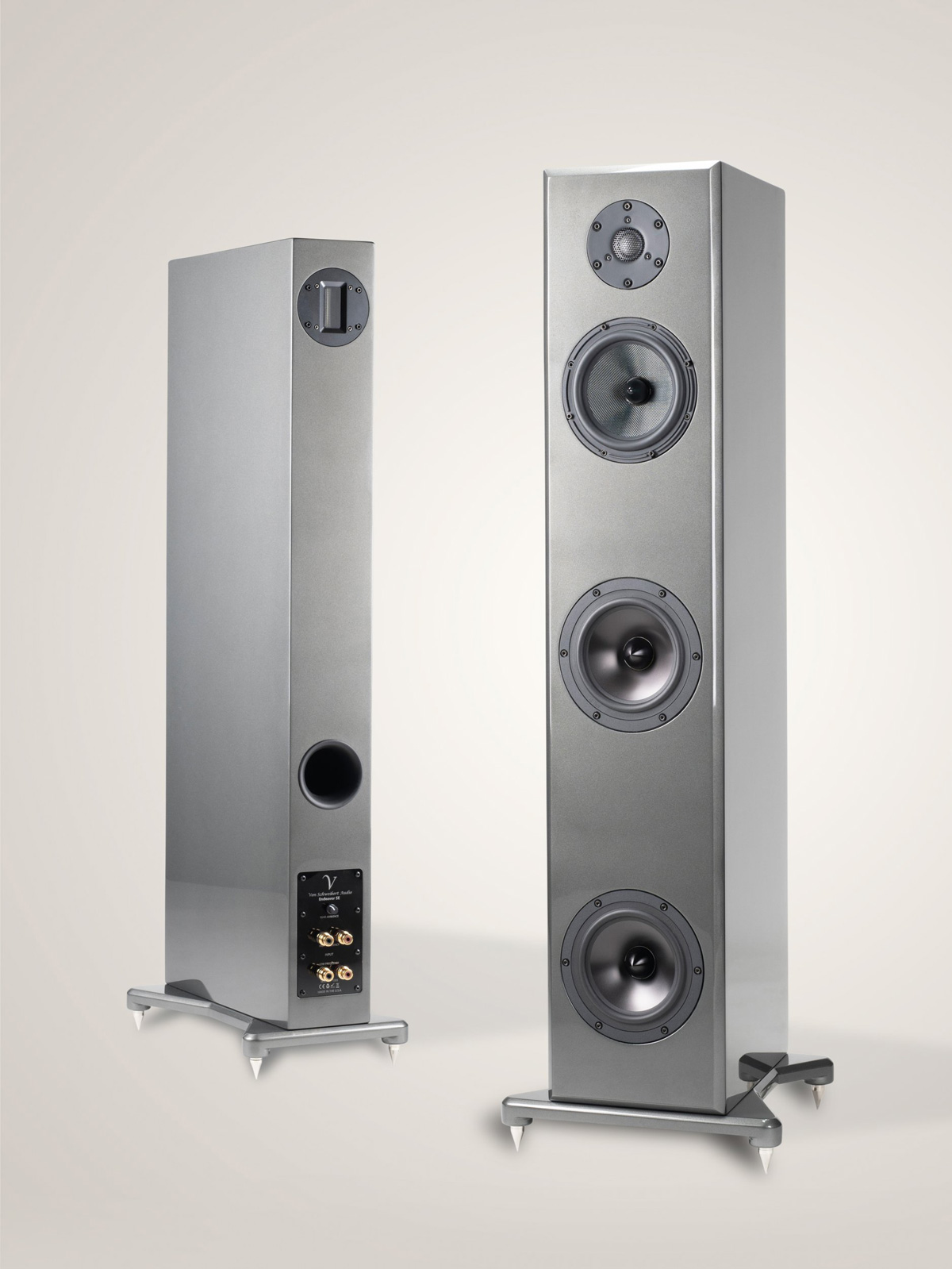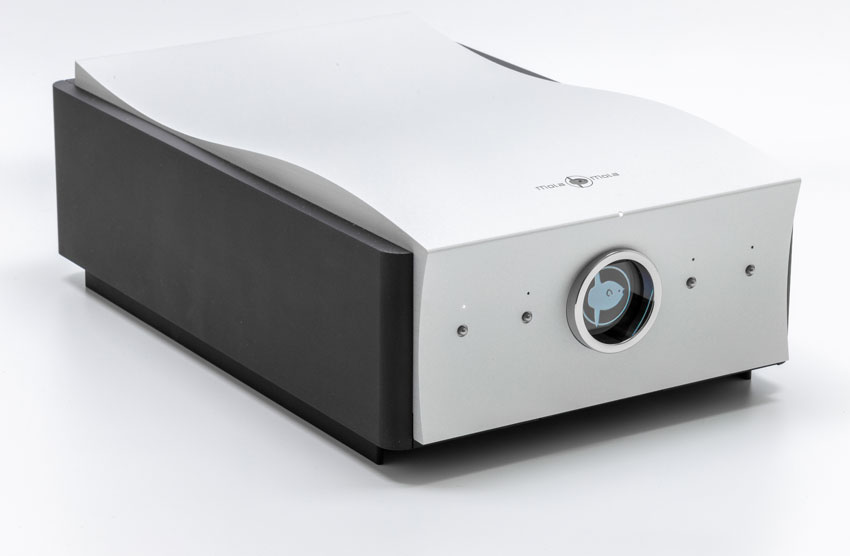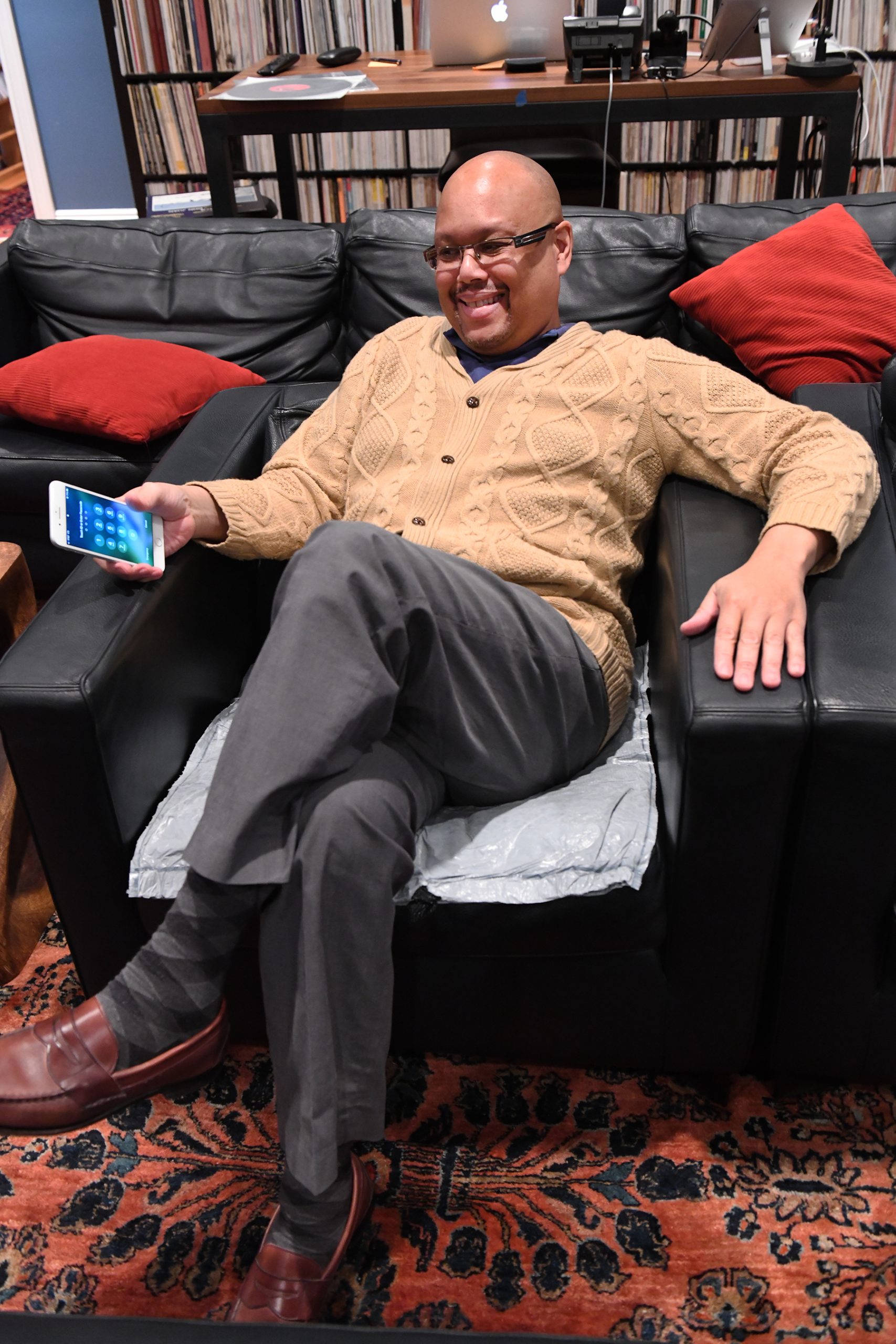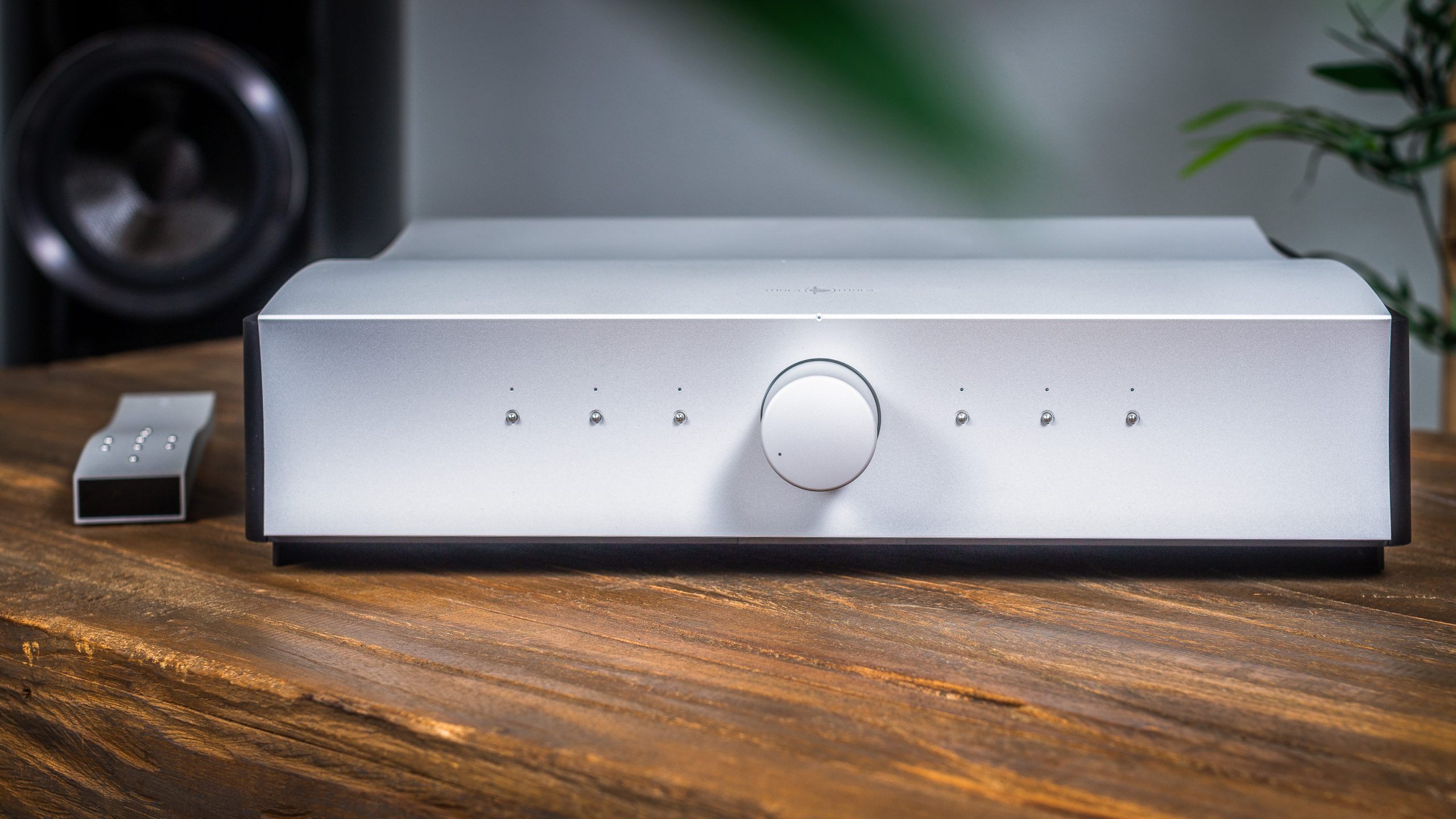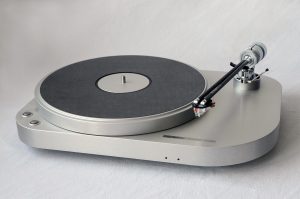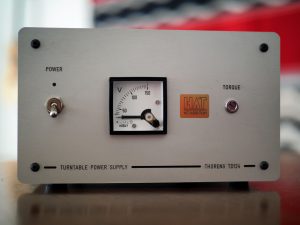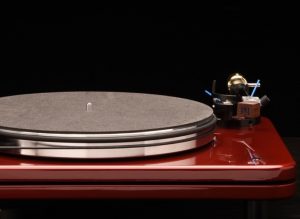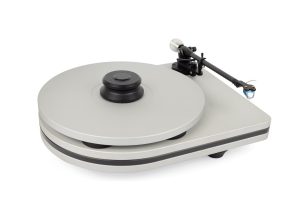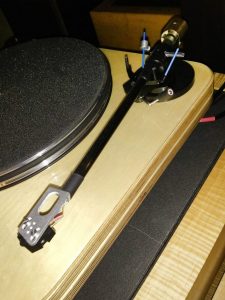The Unbearable Lightness of Low-Torque Motors and Heavy Platters
Of the various turntable manufacturers to embrace the design principles of the late Tom Fletcher, founder of Nottingham Analogue, Pear Audio is perhaps the most visible in the United States. Other players in this expanding universe include Palmer Audio and Analogue Works, both British firms if I'm not mistaken. According to Michael Vamos of Audio Skies, the company that distributes Pear Audio's extensive and growing line of products domestically, only Pear Audio has a direct link to Fletcher and his work. Fletcher, who died in 2010, personally designed several products that remain in Pear Audio's current lineup. In addition, newer PA releases adhere rigorously to Fletcher's core design principles, more about which shortly.
As the story goes, PA founder Peter Mezek met Fletcher when the latter stepped in to help secure parts for the Well Tempered line of turntables that the former sold after that brand came under new ownership. A relationship developed, culminating in Fletcher designing three new turntables for Mezek, the Kid Howard, Kid Punch, and Kid Thomas, along with matching tonearms. According to Vamos, Fletcher realized that he could not improve any further on his earlier Nottingham designs, and so started from a blank slate to create an entirely new product line. Fletcher retained Nottingham Analogue's low torque motor scheme, but employed all new materials for the updated Pear Audio tables, including new plinth materials, new platter configurations, new bearing oil, and completely new tonearms. According the Vamos, "Tom also initiated Peter Mezek in all the design secrets so that he could further develop these designs and make them even better" than the originals.
Again, according to Mr. Vamos, only Pear Audio can claim such a direct connection to Fletcher and his novel designs.
For those unfamiliar with the basic Fletcher formula, the gist of his approach involves the use of very low torque AC motors to drive relatively heavy platters (typically machined from aluminum). The considerable size of these platters necessitates the use of substantial spindle / bearing assemblies and, again, typically, non-suspended plinths. The Kid Howard turntable and Cornet 2 tonearm under review here (both Fletcher designs), a suspensionless model and fourth from the top in the Pear Audio line (the Kid Punch, Kid Thomas, and new Odar tables sit above the KH, the Captain John Handy and Little John models below), boasts a platter that weighs a hefty 17 lbs. Held in hand, it inspires confidence and imparts a mass-derived sense of sheer heft and attendant stability.
In contrast to the beefy patter, the Kid Howard plinth is a relatively lightweight affair machined from a wood product of unidentified type. The PA plinths eschew the massive, highly damped, and therefore largely non-resonant structures used by the likes of Pro-ject in their RPM turntables, or the mass-loaded CNC machined aluminum plinths that feature prominently in the extensive line of Acoustic Signature turntables, two brands that I am quite familiar with. Instead Pear Audio's plinths function as relatively light (in terms of weight) mechanical filters that dissipate rather than absorb and damp unwanted resonant energy.
The outboard AC motors used in all Pear Audio turntables reiterate the vibration control theme echoed in the plinth designs. Here, the motor's off-site placement (facilitated by a cutout in the plinth that permits placement of the motor pod relatively close to the platter) ensures that any motor-induced vibrations that do reach the platter originate from the rotational spin of the rubber belt, not the contact-sourced vibrations that one invariably encounters when one rigidly mounts the motor assembly to the turntable plinth. The acetal plastic motor pod felt reassuringly vibration free when I held it in my hand.
By the way, the motor runs constantly; there is no on / off switch to fiddle with once you plug the unit into the wall. Like most turntable designers, Pear Audio does not recommend plugging their motors into an audiophile-grade power conditioner (either passive or active). To play a record, one must spin the platter by hand with just enough torque to overcome the platter's resting-state inertia. Apply too little force and the low torque motor will not "lock" with the hand-driven spinning platter. After a couple of days, I knew just how much spin force to use to get the platter up and running. It came as a bit of a surprise to discover, after several weeks of practice, that I grew to enjoy this hands-on ritual. I found that it enhanced the sense of tactile connectedness to the replay of my favorite LPs.
All of this must certainly seem like quite a bit of hands-on involvement just to play records. But there is a method to the madness. According to the Fletcher model, the use of extremely low-torque motors to drive the platter / bearing assembly effectively isolates the vital stylus / record groove interface from extraneous high-torque motor generated vibrations. The motor, in combination with the inherent inertia of the high mass platter, delivers, at least in theory, just enough torque to maintain the chosen platter speed, either 33 1/3 or 45 RPM. In theory, and in practice, this translates to relatively low system self-noise, low levels of coloration, and supple micro-dynamic expressiveness.
Recent iterations of the Pear Audio turntables employ outboard power supply units to drive the motor pods. In the absence of an outboard PSU, 33 1⁄3 to 45 RPM speed changes necessitate moving the belt, or belts, to a higher or lower rung on the belt pulley mechanism, as was the case with the Kid Howard. In my experience, the use of an outboard PSU to power the turntable motor almost always yields greater rotational stability, lower noise, and yes, better overall sound. For his part, Audio Skies chief Michael Vamos strongly believes that the outboard PSU significantly improves the sound of all Pear Audio's turntables.
However, to keep things simple, the Kid Howard turntable reviewed here, one of the firm's just-above-entry-level models, arrived sans an outboard PSU, although this remains a cost-plus option if desired. Again, reassuringly, a Pear Audio representative delivered the turntable to my home and set the unit up, including alignment of the pre-mounted Ortofon Cadenza Black MC cartridge. If you purchase your PA turntable from an authorized Audio Skies retailer, you can expect the same level of service.
For a more detailed discussion about the design philosophies behind Pear Audio Blue's extensive line of turntables and arms, I encourage you to read Ye Olde Editor's (David Robinson) thoughtful discussion of the pricier Kid Thomas model that he reviewed last year (HERE).
Can We Dance with Your Dates?
During the several months that I lived with and enjoyed the Kid Howard turntable, I got to pair the table / arm / cartridge combo with several excellent phono preamps. The roundup included the excellent JE Audio HP20 phono preamp that I reviewed a while back (HERE), my reference Parasound JC 3+ and Sutherland Engineering 20/20 phono stages (the latter reviewed HERE), and the excellent onboard phono stages of the Parasound HINT 6 Integrated Amplifier (HERE) and Mola Mola Makua preamp (HERE).
While each phono preamp that I used with the Kid Howard Turntable / Cornet 2 Tonearm / Ortofon Cadenza Black MC cartridge suite produced a different overall sonic signature, several defining qualities emerged as musical constants. For starters, the Pear Audio combo excelled at micro-dynamic expressiveness, tracking subtle dynamic and tempo shifts precisely and confidently. Well recorded jazz and classical LPs bloomed with a remarkable degree of dynamic and temporal plasticity, lending to the best recordings a feeling of unforced naturalness and composure.
Highly regarded reissues like Analogue Production's lovely Bill Evans: Riverside Recordings drew me into the recorded acoustic in much the way that a summer shower has the power to lull one into a refreshing midday slumber. Where tables like the Origin Live Resolution Mk. III and Kronos Sparta 0.5 (both currently in house) enthrall with their class-leading transient precision and punch, the Kid Howard turntable / Cornet 2 tonearm / Ortofon Cadenza Black MC cartridge suite seduces with softer transients, velvety smooth textures, water-like mircro-dynamic flow, and engaging sweetness. Personal vintage classical favorites like Lutoslawski: Overture / Funeral Music / Little Suite (Candide CE 31035) and Elie Siegmeister: Concerto for Flute and Orchestra / Concerto for Clarinet and Orchestra (Turnabout TV-S 34640) flowed with a billowing grace that seemed almost dance-like, the Kid Howard suite poignantly contrasting the gravitational pull of the Kronos 0.5 that I raved about recently (HERE) with an almost whirling dervish-like sensuality and charm.
On the Siegmeister LP, soloist Jack Brymer's beautifully recorded clarinet literally pops out of the recorded acoustic and into the listening room via the Origin Live and Kronos turntables (as do pizzicato strings, cellos, and brass instruments), but blooms more effusively into the listening space via the Pear Audio Kid Howard suite. Similarly, on a well-pressed modern LP like Chad Kassem's stellar reissue of the Sibelius: Symphony No. 5 and Karelia Suite (RCA/Decca-Analogue Productions), the Pear Audio combo ever-so-slightly truncates initial transients, but lingers just that wee bit longer on instrumental decays, gifting the sound with a gossamer-like smoothness, ebullience, and sweetness.
Tone and timbre sang from the same basic songbook. The Pear Audio combo's richly drawn portrayal of instrumental colors, delicate, silky decays, and remarkable timbral sweetness resembled, at least to my ear, a Van Gogh painting, lyrically and invitingly pulling the listener into and inside the recording. By way of contrast, the slightly more expensive Origin Live combo (as well as the much pricier Kronos 0.5) portrays tone and timbre (not to mention dynamic contrasts) like a Jackson Pollock abstract, enthralling the listener / viewer with a kinetic, almost gravitational, portrayal of musical color—a jolt of red here, a plume of blue there—that positively scintillates. Where the OL electrifies, the Pear Audio Kid Howard table charms, teases, and seduces. Both approaches get your attention, but in disarmingly different ways.
Selecting the Right Dance Partner
As noted above, the Pear Audio Kid Howard suite showed a remarkably consistent set of heels regardless of which phono stage I paired it with. But differences did emerge. With the Mola Mola onboard phono stage doing the heavy lifting, the Pear Audio Kid Howard suite reproduced low frequency content and dynamic swings with near depth-charge like force and authority. The JE Audio HP20 almost matched the low-end heft and power of the Mola Mola, but lost out to the Dutch preamp (if only a bit) in terms of soundstage breadth and depth portrayal, and imaging specificity.
The Parasound JC 3+ paired exceptionally well with the Pear Audio Kid Howard suite, something I did not expect. Given the Kid Howard suite's inherent richness of tone and timbre, qualities it shares to some extent with the JC 3+, I expected to be overwhelmed by a "too much of a good thing" presentation. To my surprise, the Pear Audio Kid Howard suite sounded fantastic when paired with the John Curl-designed phono preamp, the solid state unit teasing out all the air, transparency, and speed I heard with the Mola Mola preamp, but with just a tad more meat on the bone, so to speak. The JC 3+ could not, however, match the Mola Mola phono preamp's low bass speed, grip, and power.
Sutherland Engineering's 20/20 phono preamp also worked a treat with the Pear Audio / Ortofon combo, the demure solid-state unit's top-end openness, transient speed, and remarkable micro-dynamic expressiveness complementing the Ortofon's smoothness, warmth, and naturalness to a tee. While the 20/20 delivered a bit less "meat on the bone" than did the Parasound JC 3+ phono preamp, the former countered by offering more top-end extension, superior transient speed, and a touch more transparency overall.
On a first-rate recording like Erich Leinsdorf and the Los Angeles Philharmonic's direct-to-disc masterpiece Prokofiev: Excerpts from the Ballet Romeo and Juliet (Sheffield Labs), mastered by Doug Wyatt and the late Doug Sax, the 20/20 captured the jagged rhythms of the Act II Finale and the achingly sweet lyricism of the Juliet the Young Girl movement with surprising composure. Tone and timbre were spot-on, with air in abundance, and ample dynamic expressiveness and bass punch.
In short, I found that the Pear Audio / Ortofon combo meshed well with a wide range of phono stages and front ends. I would, however, exercise a bit of caution if your system's sound veers toward the rich and euphonic side of the color spectrum. In that case, you might consider substituting a leaner voiced cartridge for the Cadenza Black to achieve the right sonic balance from your system.
The Ortofon Cadenza Black MC Cartridge
Although primarily a review of the Pear Audio Kid Howard Turntable / Cornet 2 Tonearm combination, it would be negligent not to mention the significant contributions of the Ortofon Cadenza Black MC cartridge. The Black has anchored Ortofon's widely celebrated Cadenza line of low output moving coils for several years now, the Cadenza line replacing the previous Kontrapunkt cartridge line that wowed critics and listeners a little over a decade ago.
The Cadenza Black employs a nude Shibata stylus with a boron cantilever. Renowned for its excellent groove tracing capabilities, the Shibata is also said to reduce groove wear (versus a standard conical stylus) because the total contact surface area covered by the stylus is considerably larger than that covered by a conical or elliptical design, with less downforce than applied to a conical stylus's single point of contact. Ortofon claims that the effective mass of the stylus / cantilever system is extremely low, this in large part due to the use of a very thin boron rod. The Black borrows key technologies from Ortofon's pricier offerings, including the Wide Range Damping-system (WRD) utilized in the celebrated MC Windfeld, MC A90, MC Anna, Xpression, and MC A95 cartridges. The WRD-systems is said to control high and low frequency damping separately. The coil wire is the famous Ortofon Aucurum wire, which is a gold plated 6NX copper wire.
In practice, Cadenza Black combo tracked every LP I threw at it with remarkable fidelity. It excelled musically, regardless of the associated phono stage used in the review. Serenely composed, naturally voiced, fluid, highly expressive, and musically engaging, the Black surrenders to pricier moving coils only that last degree of filigreed purity and shimmer on top, and the kind of center of the earth low frequency extension down low that one really only gets when your budget tops $4 or $5K (and beyond).
The Black compellingly exhumed musical details long buried in the grooves of some of my go-to vintage vinyl favorites. Replaying my Cold War-era Time-Life Records box set The Story of Great Music: The Music of Today, I was amazed at how natural, textured, balanced, and engaging Shostakovich's Festival Overture and Walton's Suite to Henry V sounded. Bold, colorful, and musically vibrant, the EMI's, like the London and Decca recordings of the same era, brilliantly counterpointed the presumed sonic superiority of the RCA Shaded Dog and Cozart-Fine / Mercury Living Presence catalogs.
Now, don't get me wrong. I'm not claiming that my Time-Life reissues rival in sound quality terms what one would expect to hear from the original EMI pressings. What I am claiming is that the Black, in combination with the Pear Audio Kid Howard Turntable / Cornet 2 Tonearm suite, gave me a musically compelling taste of what the original LPs must have sounded like.
Parting Thoughts
For many, Pear Audio's low-torque motor / high-mass platter / "spin-by-hand" start and stop arrangement will seem unnecessarily quirky and inconvenient. Doing things differently, and in PA's case, radically so, invariably invites derision if not outright dismissal. For listeners with open ears and minds, however, the Tom Fletcher / Pear Audio approach shouts, and quite convincingly, that different turntable design approaches can, when expertly implemented, deliver substantial sonic rewards.
Pear Audio is not alone in choosing to forego the path of least commercial resistance in designing its turntables. From Rega with its lightweight / high-rigidity foam core plinths, to Kronos Audio with its unique counter-rotating platter designs, to maverick designer William Firebaugh's ground-breaking squash ball-suspended Well Tempered Labs turntables and golf ball balanced tonearms, there appears to be no shortage of intrepid souls willing to approach the art of turntable and tonearm design from fresh and novel perspectives.
Ultimately, you and I are the beneficiaries of this outpouring of design creativity. Whether Pear Audio's design priorities sync with your specific musical tastes, only you can decide. What I can tell you is this: I certainly didn't expect to like the Kid Howard ensemble as much as I did, but I really missed its supple rhythmic presentation, its billowy airiness, and its balanced (if slightly sweet) musicality when I shipped the player back to Señor Vamos.
I can't wait to hear what Pear Audio has to offer with its higher priced models!
Cheers!
Pear Audio Blue Kid Howard Turntable / Cornet 2 Tonearm
Retail: $4995 (sold bundled)
Pear Audio Analogue
U.S. Distributor
Audio Skies
310.975.7099
Ortofon Cadenza Black Moving Coil Phono Cartridge
Retail: $2729
U.S. Distributor
Ortofon US
500 Executive Blvd, Suite 102
Ossining, NY 10562
914.762.8646




